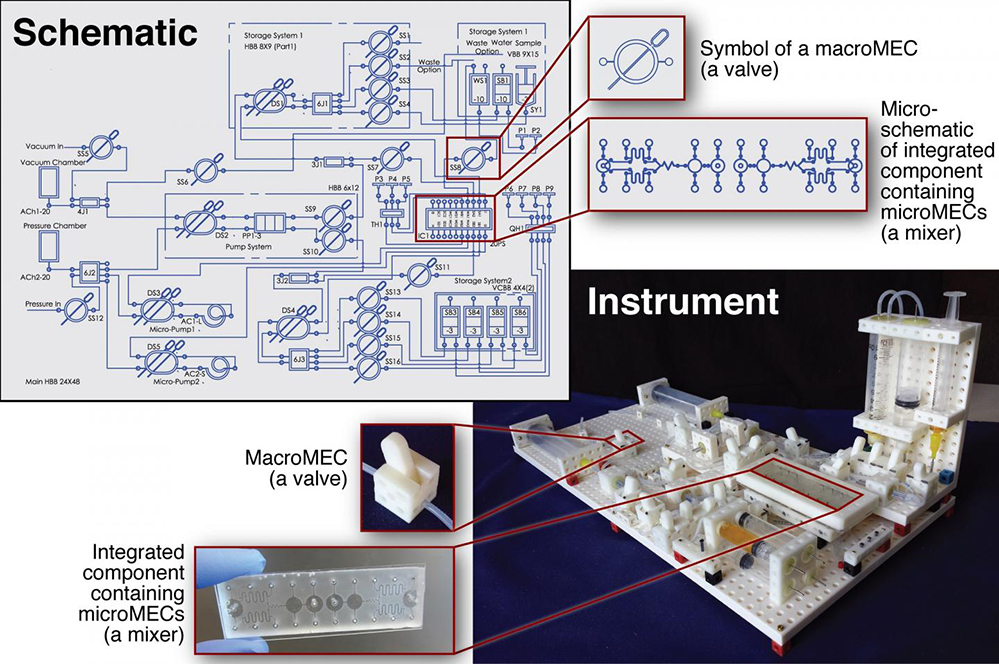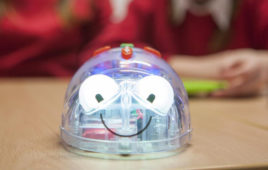A team of researchers and students at the University of California, Riverside has created a Lego-like system of blocks to custom make chemical and biological research instruments quickly, easily and affordably. The system of 3D-printed blocks can be used in university labs, schools, hospitals, and anywhere there is a need for scientific tools.
The blocks are called Multifluidic Evolutionary Components (MECs) because of their flexibility and adaptability. Each block in the system performs a basic task found in a lab instrument, like pumping fluids, making measurements or interfacing with a user.
Since the blocks are designed to work together, users can build apparatus—like bioreactors for making alternative fuels or acid-base titration tools for high school chemistry classes—rapidly and efficiently. The blocks are especially well suited for resource-limited settings, where a library of blocks could be used to create a variety of different research and diagnostic tools.

An overview of designing and building a custom lab instrument using the Multifluidic Evolutionary Component (MEC) system created at UC Riverside. (Credit: UC Riverside)
The project is led by Douglas Hill, a graduate student working with William Grover, assistant professor of bioengineering in UCR’s Bourns College of Engineering.
Armed with a grant from the National Science Foundation’s Instrument Development for Biological Research program, Hill and Grover began to develop their building blocks. They enlisted help from UC Riverside undergraduates who have designed new blocks and built instruments using the blocks.
Thus far, more than 50 students from across the UCR campus have participated, creating an extensive system of over 200 MEC blocks and a system of schematics that guide assembly of the MEC building blocks into finished instruments.
Grover and Hill are now planning to pilot the MEC system in two California school districts, where it will support recently introduced ‘Next Generation Science Standards,’ a multi-state initiative to strengthen science education in K-12 schools.
Hill said the team’s long-term goal is to make the MEC blocks available and affordable for others to use.
“As 3D printers become more mainstream, we’ll see them being used by schools and non-profits working in underserved communities, so ultimately we would like people to be able to use those printers to create their own MEC blocks and build the research and educational tools they need,” he said.
Read the full story at https://ucrtoday.ucr.edu/38752


